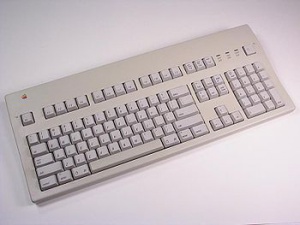We are still actively working on the spam issue.
Difference between revisions of "Mechanical keyboards"
(Moved intro, added common switch variants and info on Cherry MX switches.) |
Muh6trillion (talk | contribs) (Contained guides in a gallery) |
||
| Line 1: | Line 1: | ||
Main article: [[Keyboards]] | Main article: [[Keyboards]] | ||
| − | |||
| − | |||
| − | |||
The difference between mechanical keyboards and membrane keyboards lies in the switches beneath the keys. Mechanical keyboards are designed to mimic what typing feels like on a typewriter. Mechanical switches have been known to last much longer than the traditional membrane switches, as well as allowing users to type faster and more effectively, and resulting in less typographical errors. | The difference between mechanical keyboards and membrane keyboards lies in the switches beneath the keys. Mechanical keyboards are designed to mimic what typing feels like on a typewriter. Mechanical switches have been known to last much longer than the traditional membrane switches, as well as allowing users to type faster and more effectively, and resulting in less typographical errors. | ||
| Line 32: | Line 29: | ||
== Retro == | == Retro == | ||
| + | [[File:Apple_Extended_Keyboard.jpg|thumb|Apple Extended keyboard.]] | ||
| + | Apple® Extended Keyboard™ | ||
| − | |||
Most homosexual keyboard ever made, It has a retro rainbow Apple® logo, It's a mechanical keyboard and It looks better than that geeky old-fashioned non-retro IBM® Model M™ | Most homosexual keyboard ever made, It has a retro rainbow Apple® logo, It's a mechanical keyboard and It looks better than that geeky old-fashioned non-retro IBM® Model M™ | ||
| − | + | ||
| + | ==Guides== | ||
| + | <gallery> | ||
| + | File:Mech keyboard switches.gif|The inner workings on a mechanical keyboard switch, with detailed information on the loudness, force required to activate etc. | ||
| + | File:Mechanical Switch Guide v1.0.5.png|Mechanical Switch Guide | ||
| + | File:1365325490250.jpg|Mechanical Keyboard Guide | ||
| + | File:Keyboard guide.jpg|Keyboard guide | ||
| + | </gallery> | ||
[[Category:Hardware]] | [[Category:Hardware]] | ||
[[Category:Recommendations]] | [[Category:Recommendations]] | ||
Revision as of 12:02, 29 January 2014
Main article: Keyboards
The difference between mechanical keyboards and membrane keyboards lies in the switches beneath the keys. Mechanical keyboards are designed to mimic what typing feels like on a typewriter. Mechanical switches have been known to last much longer than the traditional membrane switches, as well as allowing users to type faster and more effectively, and resulting in less typographical errors.
Cherry MX Keyboards
Cherry currently produces the most popular switches for mechanical keyboards. They offer a number of clicky/non-clicky and linear/non-linear variants of their switches to suit the needs of the typist. The switch variant can be determined by looking at the color of the stem.
Many replacement keysets and novelty keys are available for Cherry MX Keyboards because of their popularity. A common upgrade is replacing stock ABS keycaps with PBT variants which are made of more durable materials.
Common Switch variants
| Switch type | Clicky | Tactile | Actuation force |
|---|---|---|---|
| Cherry MX Black | No | No | 60 cN |
| Cherry MX Red | No | No | 45 cN |
| Cherry MX Brown | No | Yes | 45 cN (55 cN Peak Force) |
| Cherry MX Clear | No | Yes | 65 cN (65 cN Peak Force) |
| Cherry MX Blue | Yes | Yes | 60 cN (60 cN Peak Force) |
| Cherry MX White | Yes | Yes | 50 cN (80 cN Peak Force) |
| Cherry MX Green | Yes | Yes | 80 cN |
Retro
Apple® Extended Keyboard™
Most homosexual keyboard ever made, It has a retro rainbow Apple® logo, It's a mechanical keyboard and It looks better than that geeky old-fashioned non-retro IBM® Model M™


